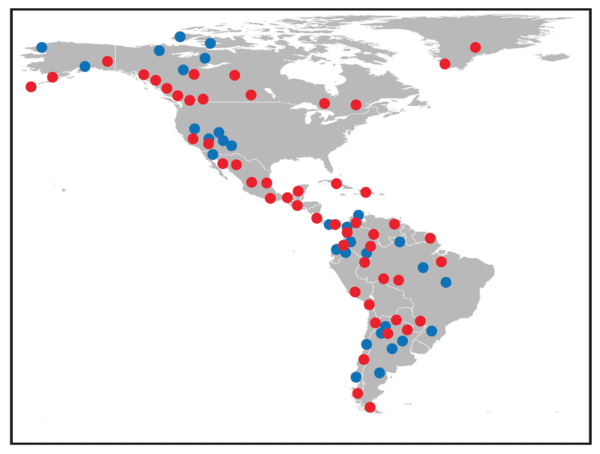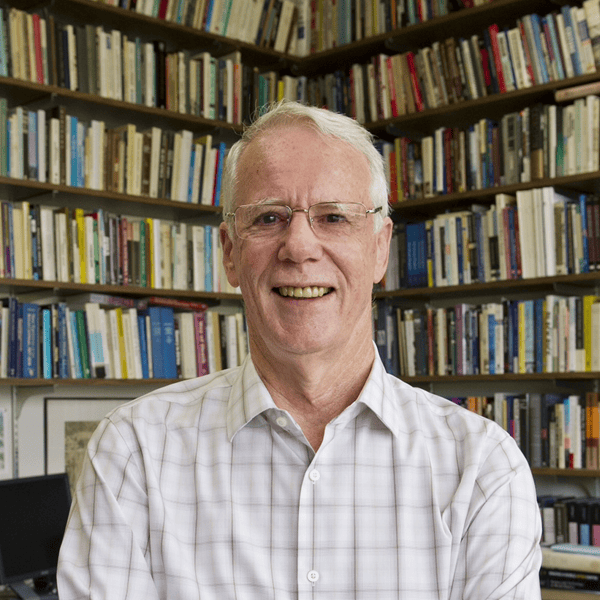In education within the United States, the term STEM has gained wide currency: it frames science, technology, engineering, and mathematics as an essential curriculum, distinct from other categories of knowledge, including the humanities, arts, social sciences, and most professions. Information from science carries particular prestige, especially because it results from what many people consider objective “advances.” But the other categories continue to prove their importance. As a case in point, I will argue that knowledge from academic history and knowledge held within communities—in this instance, Native American communities—provide analytical and ethical perspectives and details that are central to the completion of scientific analysis.
As the human genome was decoded, it provided a new way to explore change in the human past. In one simple but important experiment based on mitochondrial DNA, geneticists showed that the human species emerged some 200,000 years ago on the African continent and then spread worldwide.1 Genomic science made many more discoveries relating to human history—pursuing descent through the male and female lines—but these could not tell the whole story. Thus, when geneticists focused on Y-chromosome studies, following the male line, they were criticized for privileging a patriarchal approach to the genetic past. Science soon collided with history and community. Increasingly, it is becoming clear that the expansion of valid knowledge about ancestry requires the collaboration of these three interests, and perhaps others. When it comes to the history of the peoples of the Americas, we can see how academic science, academic history, and community knowledge interact, and how they can sometimes benefit from one another.
Academic geneticists initially neglected Native American populations. They mistakenly assumed that Native Americans no longer had a distinct genetic heritage, because they had intermarried significantly with populations from Europe and Africa. But newer techniques made it possible to highlight Native American ancestry by masking the genetic markers of Europeans and Africans. Techniques and interest grew, spurred on by the 1996 discovery of the skeleton of a man who lived 8,500 years ago near Kennewick, Washington, along the Columbia River. Scientists, working from skull shape, initially identified him as of “Caucasoid” ancestry. Native American peoples of the Columbia River region responded, claimed community ownership of his remains, and identified him as an ancestor: the Ancient One.2
Ultimately, geneticists, led by Danish-born Eske Willerslev, recognized the importance of meeting and collaborating with community members to discuss what scientific knowledge could be gained from the remains of the Ancient One and his place in the community that claims him.3 Once discussions reached mutual agreement, new techniques were applied, showing that indigenous populations of North and South America are related to him, and that his earlier ancestors were of Asian stock rather than European. This was an example of the increasing collaboration of communities and scientists.
But it takes more than goodwill to resolve historical mysteries. One essential problem is that geneticists begin with samples from living people—with DNA from today—then attempt to link them to people who lived centuries and millennia ago. Here is where research by historians and community members offers key questions and essential information to shape scientific inquiry, in climate, language, material culture, social patterns, and even ideas about factors that might have changed the rate of genetic change.

Fig. 1: DNA samples from Native American communities. Source: Bolnick et al., “Native American Genomics.”
Figures 1 and 2 show the location of data from a survey of recent literature on Native American genetic characteristics by Deborah A. Bolnick et al. The data, resulting from collaboration with Native populations throughout the hemisphere, show that the genetic past of Native Americans can be documented—though leaving open the question of how best to interpret it. Figure 1 shows the location of recently sampled individuals and groups analyzed in this study.4 Red dots show cases with genome-wide genetic markers. Blue dots show cases of maternally inherited mitochondrial genomes.5
In a new technique, geneticists locate and analyze “ancient DNA” from persons long deceased. Figure 2 shows the data retrieved from human remains over 8,000 years old, including those of the Ancient One.6 But again, the question arises: how can we know the identity of those past persons and whether there are persons alive today who can be considered their descendants? Even if we find close genetic links between a human skeleton of 5,000 years ago and a living person today, it might be that the location, language, and culture of the community have changed greatly in the interim.
Historians know that human communities cannot be thought of as pure groups that remain in place. Members of Native communities, like others, have always migrated and joined other communities, adopting new languages and customs.7 Additionally, Europeans and Africans joined Native American communities, and vice versa. So all of these peoples were, in this sense, mixed. Information from community members will help geneticists in tracing origins, by linking DNA from living persons to those of the past.

Fig. 2: Samples of ancient DNA from Native American remains over 8,000 years old. Source: Bolnick et al., “Native American Genomics.”
But for Native American communities and historians alike, matters are not straightforward. Native communities are greatly concerned with the history and composition of their peoples in recent centuries—from colonization to today. For many generations, who can qualify as a legal member has been a matter of discussion within communities and of debates between communities and governments. Part of this discussion involved the question of whether people inside the community or outside of it (historians, scientists, or otherwise) determined that boundary.
Another element recently entered the discussion: “business science.” Companies offered to analyze DNA samples taken from any individual, initially reporting on the identity of suspected criminals to the police. Then they began offering private individuals reports on their immediate family background or on the more distant nationality or continent of the individual’s ancestry. But these reports, known as “DNA fingerprinting,” addressed only certain parts of the genome, possibly limiting the validity of the results. Kimberly TallBear, an anthropologist knowledgeable in genetics and an enrolled member of the Sisseton-Wahpeton Oyate in South Dakota, finds flaws in DNA dot-coms; she argues that they provide useful information but leave communities divided on whom to include or exclude.8 Furthermore, these reports reify genetic ancestry into generic, continental groups, such as “African” or “European”—precisely the sort of conflation that Native communities have rejected.
Collaboration among research communities, when carried out in respectful fashion, can help us to recover the lost histories of our early ancestors; it can also provide us with more comprehensive information on our current society and its recent ancestry. Historians work especially from the documents and methods of their profession—archival materials and temporal analysis. But for questions of ancestry and descent, historians need to look in two more directions for information: toward science and the advances that genetic analysis is bringing, and toward the communities participating in the study, their priorities, and the articulation of their knowledge about their ancestry and interrelations. Minority communities, often written out of history, have proven able to document their survival and the character of their history. To make these histories known, scientists and historians must work closely with indigenous communities, recognizing their knowledge and the many areas in which the decisions are theirs.9
Notes
- Rebecca L. Cann, Mark Stoneking, and Allan C. Wilson, “Mitochondrial DNA and Human Evolution,” Nature 325, no. 6099 (January 1, 1987). [↩]
- “Lessons from the Ancient One,” Nature 533, no. 7601 (May 5, 2016). [↩]
- Carl Zimmer, “New DNA Results Show Kennewick Man Was Native American,” New York Times, June 18, 2015. [↩]
- Note the shortage of evidence for the eastern and central United States and southeastern Brazil: this shortage can be remedied with further research. [↩]
- D. A. Bolnick, J. A. Raff, L. C. Springs, A. W. Reynolds, and A. T. Miró-Herrans, “Native American Genomics and Population Histories,” Annual Review of Anthropology 45, no. 20 (2016): 1–22. [↩]
- The study includes other ancient DNA samples. Bolnick et al., “Native American Genomics.” [↩]
- P. Manning with T. Trimmer, Migration in World History, 2nd ed. (London: Routledge, 2012). [↩]
- Kim TallBear, Native American DNA: Tribal Belonging and the False Promise of Genetic Science (Minneapolis: Univ. of Minnesota Press, 2009), 67–105. [↩]
- For an editorial plea in Nature for historians to participate in genetic analysis, see “Source Material: Geneticists and Historians Need to Work Together on Using DNA to Explore the Past,” Nature 533, no. 7604 (May 25, 2016). [↩]
This work is licensed under a Creative Commons Attribution-NonCommercial-NoDerivatives 4.0 International License. Attribution must provide author name, article title, Perspectives on History, date of publication, and a link to this page. This license applies only to the article, not to text or images used here by permission.

